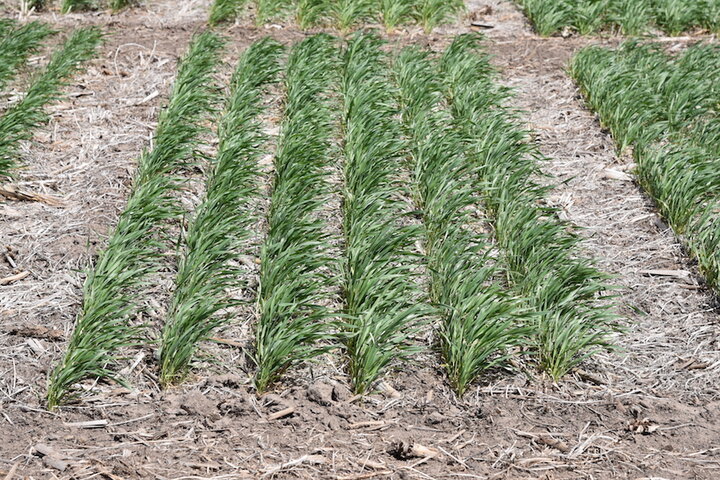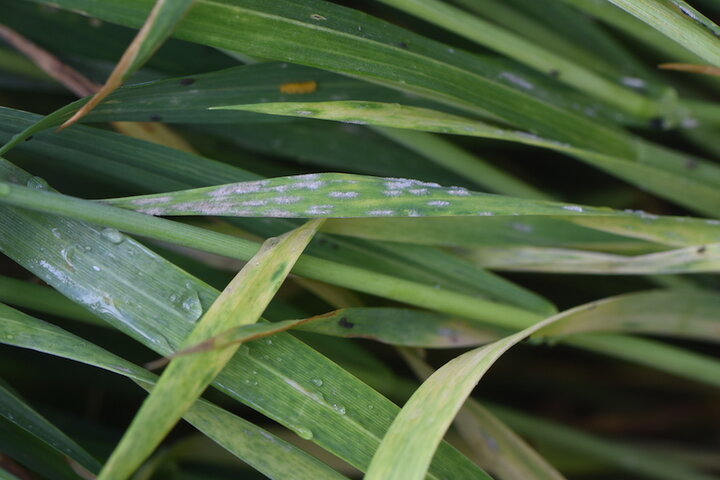Nebraska Observations
Reports from the wheat growing regions in Nebraska indicate there were no observations of disease in growers’ fields as of May 3. On May 6, wheat in a grower’s field in Jefferson County in southeast Nebraska looked healthy, but behind in development (Figure 1). It ranged in growth stage from Feekes 5 (leaf sheaths strongly erect) to Feekes 6 (first node of stem palpable). The top soil was dry (Figure 2), indicating a lack of sufficient moisture.


In research plots at the Havelock Farm in Lincoln (Lancaster County) on May 6, powdery mildew was visible on the lower leaves (Figure 3), and fungal leaf spot diseases were also developing (Figure 4). Growth stage in these research plots ranged mostly from Feekes 7 (second node of stem palpable) to Feekes 9 (flag leaf emerged), but some plants were in the boot stage (head developed and visible in the swollen section of the flag leaf sheath).


Reports From Southern States
An April 27 report by Dr. Bob Hunger, Professor & Extension Wheat Pathologist at Oklahoma State University, indicated that stripe rust was present in some parts of Oklahoma at incidence and severity levels that were severe. Leaf rust has also been reported in Oklahoma, but at low levels. Other diseases/disorders reported in Oklahoma are Septoria tritici blotch and freeze damage.
In Kansas, Dr. Erick De Wolf, Extension Wheat Pathologist at Kansas State University, received the first reports of stripe rust in Kansas on April 28. The stripe rust was found in three south central Kansas Counties. On May 4, Dr. De Wolf reported that stripe was found in several more counties, including three in the northeastern part of Kansas that are only two or three tiers of counties south of the Nebraska/Kansas border.
These reports suggest that there is a high likelihood that stripe rust will occur in Nebraska wheat fields. Leaf rust is also likely to occur, but we expect to see stripe rust first. The current cool weather is favorable for stripe rust development, especially in areas that receive rainfall.
Management
Growers are encouraged to scout wheat fields for diseases. Watch the weather and if prolonged periods of favorable weather (especially moisture) occur, consider applying a fungicide to protect the flag leaf from stripe rust, leaf rust, and fungal leaf spot diseases, notably Septoria tritici blotch and tan spot. Fungicide efficacy on wheat diseases is listed in Table 1 prepared by the North Central Regional Committee on Management of Small Grain Diseases (NCERA-184). The highlights indicate modifications from the previous year’s table.

